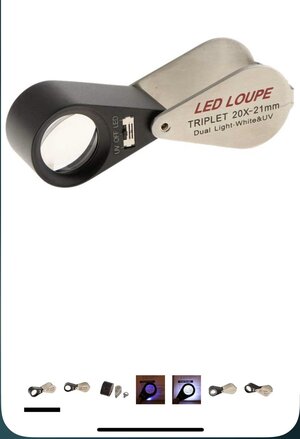Laurainthesky
Shiny_Rock
- Joined
- Feb 14, 2021
- Messages
- 245
Calcite dichroscopes are quite simple and effective.
I think it would be fun to be able to identify the gem types and differentiate synthetics for eBay adventures.
For loupe I think a 20x one is better? Mine comes with led light and uv light (or you can go without as well) which I prefer as it’s easier to use when lighting is bad

Once it's in your hands, it's too late!
Only an unscrupulous vendor would misrepresent what they are selling. Those are also the folks who do not accept returns.
I think I'm getting a cheap gem/diamond tester on amazon and see how it goes. Is there a tool to test solid gold from gold plated and other material too?
